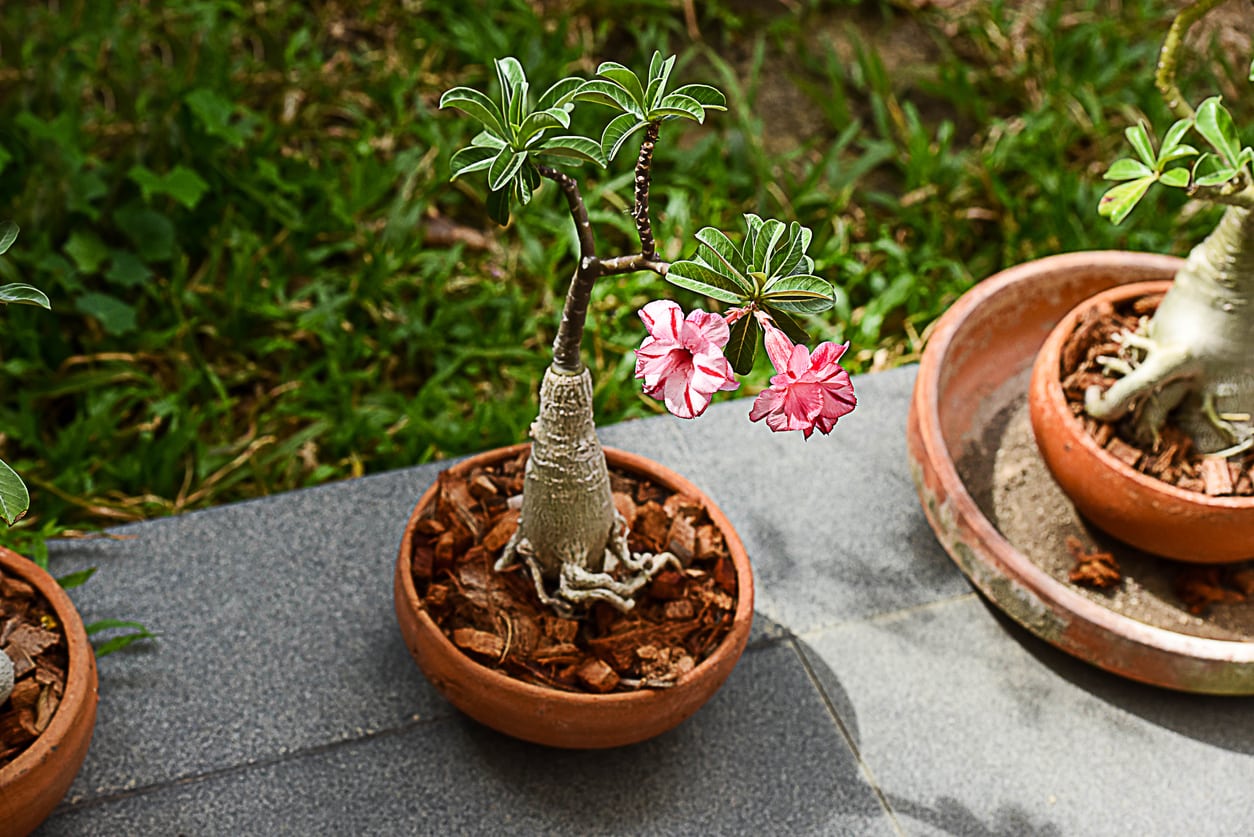How To Prune A Desert Rose – Tips For Cutting Back Desert Rose Plants


Also known as adenium or mock azalea, desert rose (Adenium obesum) is an interesting, odd-shaped succulent with gorgeous, rose-like blooms in shades ranging from snow white to intense red, depending on the variety.
Although desert rose is a beautiful, low-maintenance plant, it can become long and leggy in time. When this occurs, blooming will diminish substantially. Pruning a desert rose will avoid this problem by creating a bushy, fuller-looking plant. Cutting back a desert rose also creates more stems, which means more flowers. Read on for tips on desert rose pruning.
Best Time for Cutting Back Desert Rose
As a general rule, it’s a good idea to do desert rose pruning well before blooming, as desert rose blooms on new growth. When you remove older growth, you also risk removing buds and blooms. Be careful about cutting back desert rose in late autumn. Trimming desert rose this late in the season produces new, tender growth that may be nipped by frost when temperatures drop.
How to Prune a Desert Rose
Sterilize cutting blades before pruning; Either dip them in rubbing alcohol or wipe them with 10 percent bleach solution. If you’re cutting out diseased growth, sterilize the blades between each cut.
Remove cold-damaged growth as soon as new growth emerges in late winter or early spring. (Tip: This is also a great time to repot your desert rose.) Cut back long, lanky shoots to about the same length as other stems, using a pair of sharp, clean pruners.
Prune any branches that rub or cross other branches. Make the cuts just above a leaf node, or where the stem joins with another stem. This way, there is no unsightly stub. When pruning a desert rose, try to make cuts at a 45-degree angle to create a more natural appearance.
Monitor your plant closely throughout the season, especially during periods of warmth and high humidity. Remove leaves and stems that show white fuzz or other signs of powdery mildew and other moisture-related diseases.
Sign up for the Gardening Know How newsletter today and receive a free copy of our e-book "How to Grow Delicious Tomatoes".

A Credentialed Garden Writer, Mary H. Dyer was with Gardening Know How in the very beginning, publishing articles as early as 2007.